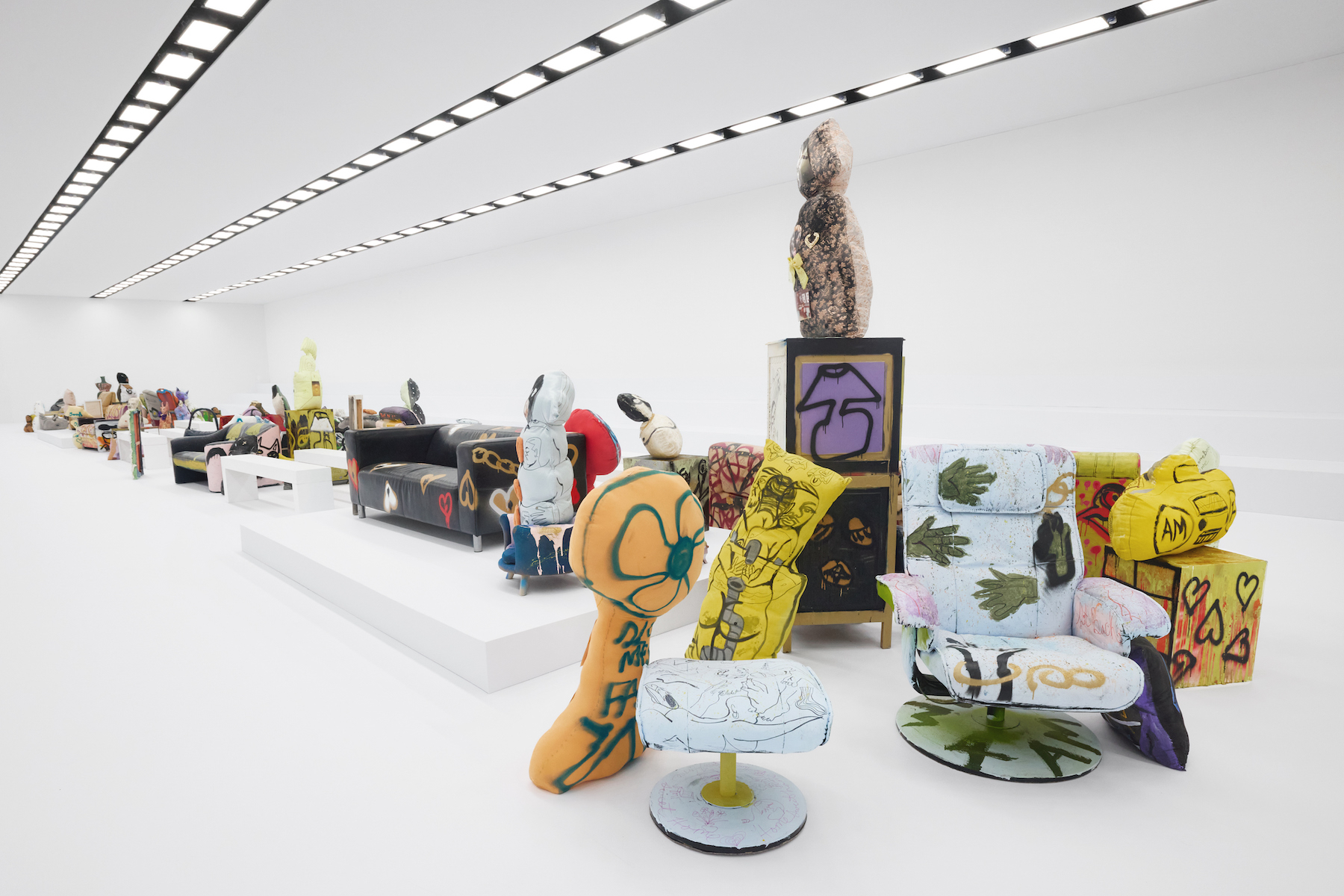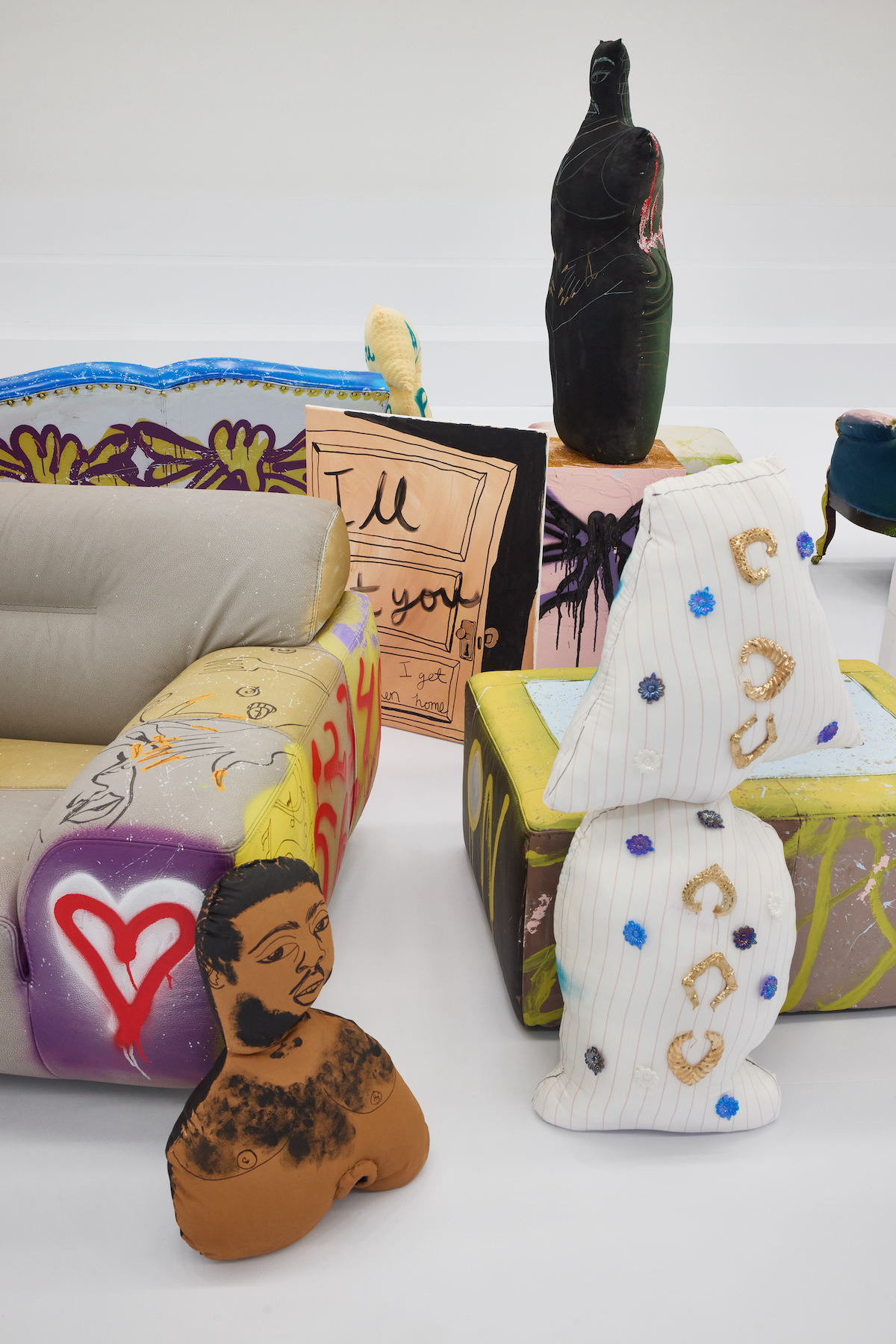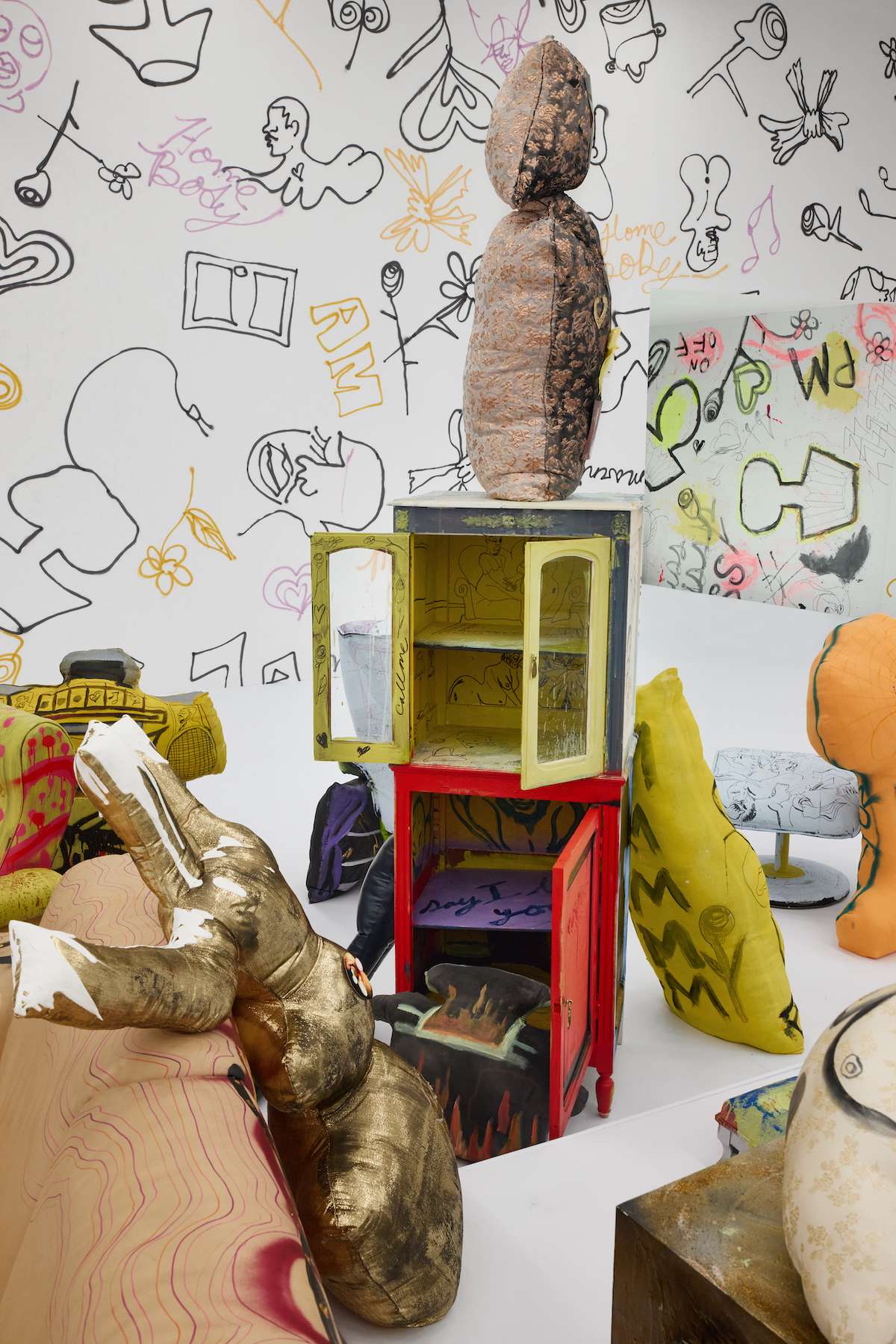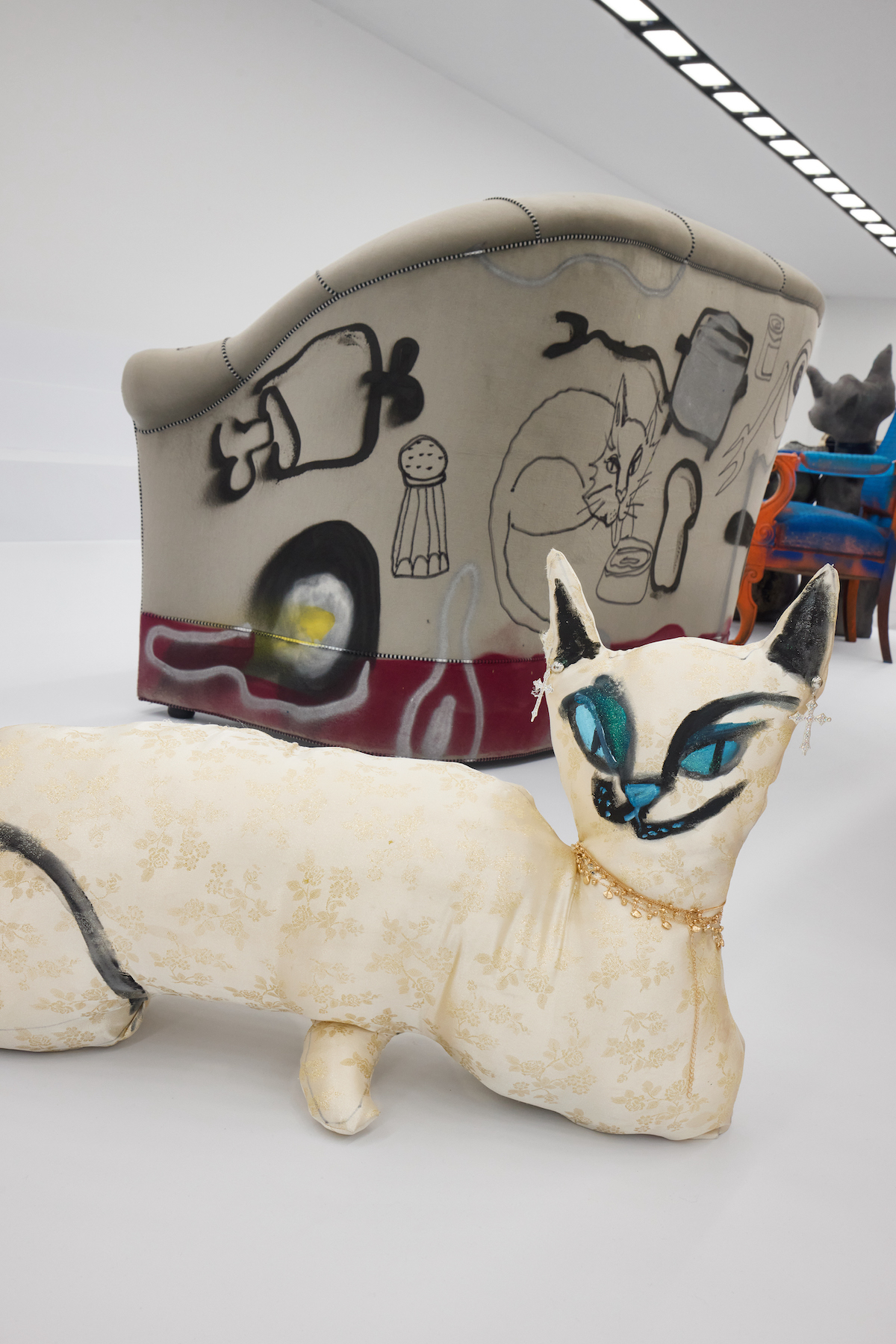
Though Jonathan Lyndon Chase is best known for their charged figurative paintings and plush sculptures, the genesis point for their creative process isn’t dissimilar to that of many fashion designers. ‘My artistic practice usually starts with a drawing or a sketch and then it sort of ripples out and transforms from there,’ they share over email, a couple days out from the unveiling of their latest large-scale commission. The fashion comparison is particularly apt since the commission in question is for Acne Studios, with the multidisciplinary artist creating the set for the Swedish fashion brand’s show during Paris Fashion Week S/S 2025.
For the set, the artist has created an entirely new series of works, installed both within and on the exterior of a purpose-built box, set in the garden of L’Observatoire de Paris. Riffing on the abiding focuses of their artistic practice, the installation explores the complex relationships between domestic and public spaces, the contested status of Black queer bodies within them, and the imprints they leave as they pass through.
Jonathan Lyndon Chase for Acne Studios S/S 2025

‘What are some ways to create an atmosphere that’s related to private, public, and liminal moments?’ was the question Lyndon Chase asked themselves as a point of departure, noting their keenness to evoke ‘familiar things and people, but also reflect things and people that maybe a broader audience doesn’t see too often’.
Arranged around a central living room scene, fringed by a runway, the installation conjures an almost uncanny sense of intimacy, as if the objects on display had been lifted from a long-lived-in lounge. Vintage settees – sourced from LeBonCoin, the French online classifieds platform – are painted with scrawled numbers, frilled bows and queer Black figures in states of solitary rest, contemplation and raunchy embrace. Among them, plush, jaunty sculptures of cats, stereo systems, jewellery-pierced lampshades and busts of bearded heads stand atop pastel cubes; canvases – some patchworked from scraps of clothing fabrics – feature vignettes of exploding stoves, or are daubed with lurid yellow foam.

Indeed, the context displayed evokes a keen sense of familiarity, but the installation’s real effect lies in the almost eerie specificity of its content. ‘We accumulate all of these objects in our spaces, and they indicate a person's personality. I’m thinking about a body – and the idea of your body’s memory in public spaces. We don’t always get to see what is beneath,’ Lyndon Chase explains of the installation’s affective logic. ‘I’m trying to achieve something that is raw or honest. I want it to feel like and look like something, someone, and someplace real. People are complicated and messy and a person’s living space, I believe, says a lot about them.’
There’s an evident parallel to be drawn, then, with the common though inherently personal nature of fashion. Working in direct response to Jonny Johansson’s latest collection for Acne Studios, Lyndon Chase introduced nuances of dress in the works – ‘The figures are wearing dresses and bows,’ they note, ‘and also many of the fabrics are inspired by the collection as well.’ They’ve also responded to the collection’s material palette, in particular, its denims and satins, which serve as the canvases for a number of the set’s paintings. ‘It’s really cool to channel the materials and the collection into my painting and drawing language,’ they share.

Lyndon Chase’s greatest achievement here, though, is the frank and generous framing that the installation provides for the collection. It’s hard not to view the clothes in a light of tender humanity, prompting reflections on our own inner emotional landscapes and how we come to terms with and express them – whether through fashion, furniture or otherwise. ‘Many of the works are deceptively heavy; although they are soft pillows, looks can be deceiving. In some ways, I’m asking a question about what it’s like to be soft and to carry joy and memories of trauma at the same time; the delights and burdens of existing in a body,’ Lyndon Chase muses.
‘Being a person who lives with bipolar disorder, it has allowed me to really focus on the nuanced relationships to emotions and the body, and how they affect the space around you,’ they continue. ‘I would also like people to consider what they think of good or bad emotions. That can look different for everyone, but perhaps embracing that is necessary to help us understand the complexities of our emotions.’
Discover more from Paris Fashion Week S/S 2025.







